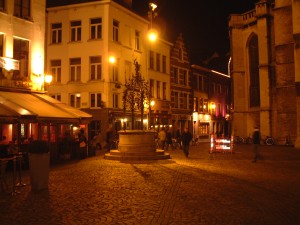November 2008
Good news on the new HMI book – the first batch sold out and UCDS has just received two boxes to sell through our website. I have received many comments from customers who have purchased it and are finding it very useful. See mycontrolroom.com
Despite the economy taking a nosedive, we have been extremely busy this month with travel at an all time high for me. The month started with what was to be a slow start due to jury duty service. However, I was released, so I was able to join the team in Denver, Colorado to start a new control room project.
Dave and I spent an exciting week in Houston, Texas at the ISA show which allowed us to meet up with some new customers and visit with a few old ones. We spent a few days in the ISA SP 101 committee meetings and helped try and get the Human Machine Interface Standard off the ground. Some good progress was made, but I do not expect to see anything for at least a year out of this group.
I have seen a lot of interest in graphics from a lot of different sources this month. It is interesting to me to see the reaction of people who suddenly realize what we have been talking about. Why the existing HMI is no longer acceptable and how we can turn the tables on human error by designing our graphics and HMI differently. It is not until we break through the barriers of tradition and get people to focus on why today’s operators suffer from poor “Situation Awareness”.
Situation awareness is more than just designing a system to illustrate what is happening in an environment, it is about the way people work, how they think, and how they solve problems. It is also about understanding their weaknesses and ensuring the workspace and environment is working for them, rather than against them.
This is why we are so aggressive on getting the control room right to support the tasks the operator has to perform by reducing distractions, addressing fatigue issues and preventing stress. Most people do not realize how a badly designed console and screens impacts an operator’s ability and affects their performance.
Having good graphics is just one of the steps to success. When the control room lighting is poor or the environmental controls are not optimum, we can seriously impact the operators performance. We start out from a disadvantage making people work 12 hour shifts and designing shift patterns that are not optimum. Operators start out with a handicap on night shift between the hours of midnight and 4.00 am.
We can design the system, the environment and select human support systems that can create a more efficient and mitigated system that reduces the potential of human error. Some refer to this as People Reliability and use techniques such as Human Reliability Analysis (HRA) to measure and mitigate.
Our industry has been slow to embrace task analysis of any kind; we always think we know the outcome without doing the work. Maybe not a good plan when the consequences are so catastrophic when we do fail.
When we talk about improving the operator’s ability by over 40% it is starting to get customers attention and they are now willing to invest in new ways of doing things as the old ways do not work and we have proved that by the recent catastrophic incidents such as Texas City.
Many customers are still playing catch up with alarm management only to find it is a battle that is extremely difficult to win and can require significant continuous investment. By putting alarm management back in context with situation awareness, we find that reducing alarms often means improving graphics and improving graphics means having the right number of screens on ergonomic furniture in an environment that supports good situation awareness.
I have also traveled to Las Vegas to give a customer an executive workshop on alarm management. Guess what we started the day with? Yes, Situation Awareness. I have a new presentation – “What happens when your automation is effective and your operator isn’t”. I then took a flight over to California for a quick Situation Awareness presentation before flying to Brussels for a new control room job in Antwerp.
 Brussels and Antwerp are beautiful places with so much history. I walked around the Cathedral area every night and found some great food restaurants. Nothing can fill you more than seeing the beauty of the architecture.
Brussels and Antwerp are beautiful places with so much history. I walked around the Cathedral area every night and found some great food restaurants. Nothing can fill you more than seeing the beauty of the architecture.
Dave and Rusty have been holding down the fort so to speak, while working on a Saudi Arabian job and work in New Orleans and Denver.
This month, UCDS will be having an Annual meeting in Sedona. This will be a time for us to join for some time of work, strategic planning, and play. I will be flying to Oslo for continuation of a project and hopefully seeing our good friends Mark & Marie the human factors specialists in Norway.
Check out my new article posted on ControlGlobal.com:
http://www.controlglobal.com/articles/2007/365.html
Check out my new article in Control Magazine (page 54):
http://control.dgtlpub.com/2008/2008-10-31/home.php
